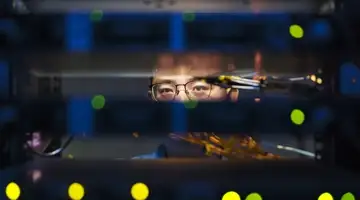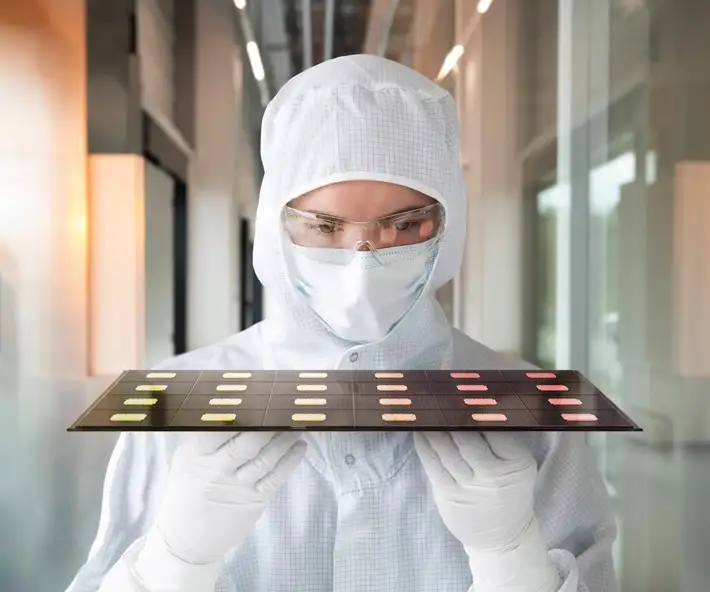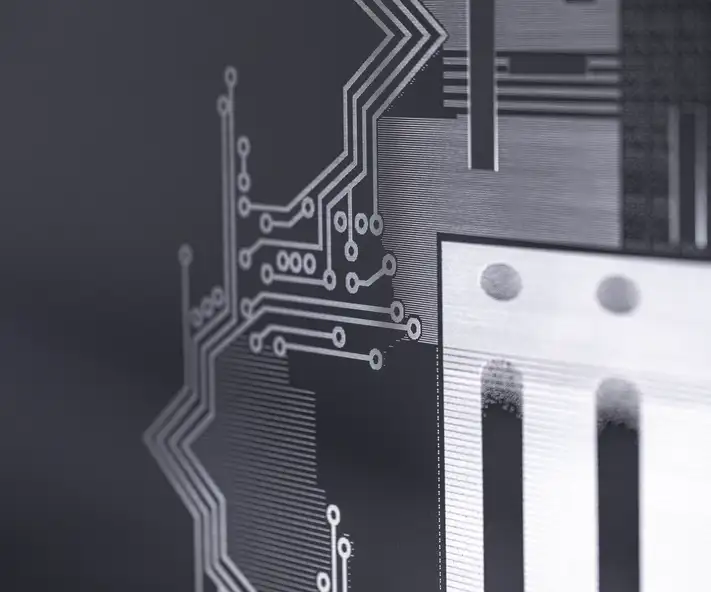
Beyond speed: what glass-based chips mean for the devices of tomorrow
As AI workloads grow, glass-core substrates enable smaller, more capable, and more responsive devices, paving the way for innovations in health, mobility, and connectivity.
Glass-core substrates are shaping the next era of semiconductors, enabling faster, smaller, and more efficient chips that unlock new applications.
- Silicon and polymers are reaching physical limits as AI demands grow.
- Glass substrates offer stability, efficiency, and scalability for advanced computing.
- This shift could transform areas like health, mobility, and connectivity.
- Progress isn’t just about speed – it opens doors to entirely new possibilities.
In 1978, with little more than curiosity and an engineering degree, Arie Brish joined National Semiconductor – and soon found himself at the center of a computing revolution. “I was right out of school, and mostly out of curiosity, took a job at National,” he recalls. Once a pioneer in transistors and integrated circuits, the company was now competing with rising powerhouses like IBM in a fast-changing industry.
“At the time, no one really had a concept of PCs, or what they would eventually become,” Arie says. “We just had the instinct that smaller and cheaper is better, and that instinct led us to develop one of the first high-performance 32-bit microprocessors.”
With that, as a 1984 headline in the New York Times declared: “THE GREAT WARS OVER SUPERCHIPS” had begun. This new generation of microprocessors would “bring revolutionary changes to the computer industry” by putting unprecedented processing power into personal and desktop machines,” the Times wrote, “far more than any now sold in the thousands of computer retail stores across the country.”
That prediction proved true. The personal computer launched an era of technology no one could have imagined just decades earlier. “Any time new computer use case have been introduced it cause a step function in the need for more computer power,” Arie, now an adjunct professor at the Bill Munday School of Business at St. Edward’s University, explains. “That was the situation when internet started, cell phones, and other new paradigms: each triggered a step change in demand for processing power.”
Meet Arie Brish
Arie Brish is an American business executive, author, and innovation strategist known for his contributions to popular thinking on technology commercialization, corporate governance, and entrepreneurship. He is the author of the book Lay an Egg and Make Chicken Soup and is currently an adjunct professor at the Bill Munday School of Business at St. Edward’s University in Austin, Texas.
Arie isn’t a stranger to the give and take of semiconductor design. As digital systems operation manager for Motorola Semiconductors in the 1990s, he oversaw the trade-offs and system integration behind the company’s new silicon chips -- pushing the limits of low-power, high-performance digital signal processing while balancing bandwidth, package size, and thermal management.
“This was the first time technology facilitated the possibility of putting a whole computer on one chip,” Arie recalls. “And that opened up a new slew of applications from computerized engine control in automobiles to smart remote controls.”
Over two decades later, the push for faster, more efficient chips continues – but now, the industry is turning to glass.
Why glass
At the heart of today’s processors lies the substrate -- a thin layer that anchors the chip and connects it to the motherboard. As AI workloads expand, chips are increasingly packaged side by side, with more processing power squeezed onto a single substrate. The organic materials long used for this task are beginning to show their limits. Under the strain of AI-scale computing, they can warp, leak heat, and struggle to maintain reliable performance.
Glass offers a different path. “Where polymer substrates struggle to keep up with performance needed, glass provides a stable foundation – rigid, tunable, and adaptable” explains Colin Schmucker, Business Development Manager of Semicon Glass Solutions at SCHOTT. “It allows designers to build packages that are larger, faster, and more energy efficient, which is exactly what’s required to train foundation models running on hundreds of thousands of GPUs.”
In other words, faster, more efficient chips don’t just make existing applications smoother. They set the stage for entirely new ones.
The foundation of tomorrow’s chips
Fuel for a breakthrough
Consider augmented reality. Up to now, most consumers have experienced AR headsets as bulky, lag-prone devices with limited battery life – far from the lightweight eyewear imagined in science fiction. By reducing signal loss and boosting efficiency, glass-based semiconductor packaging could shrink AR processors enough to deliver glasses that feel indistinguishable from ordinary frames.
Smarter machines won’t just improve devices we see – they could also enhance systems we don’t, from energy consumption to infrastructure management.
For instance, even the most chemically-efficient electric vehicle battery still depends on the intelligence of the machine it powers. Smarter on-board computers could anticipate driving conditions, optimize energy use in real time, and even coordinate with the grid to charge at the cleanest, cheapest hours. Glass substrates make that kind of low-latency, high-efficiency computing possible – amplifying the impact of better batteries.
Medical technology, data centers, 6G networks – the same story repeats across industries. Each depends not just on software innovation, but on breakthroughs in material science.
From Arie’s perspective, progress rarely comes in single, dramatic leaps. It’s incremental work that, taken together, opens the door to new paradigms. To wit, the professor quotes Henry Ford’s famous line: “If I asked my customers what they needed, they would have said ‘faster horses.’”
“Our current phones and chips are fast enough for what we use them for today,” he says. “The type of speed and power we’re talking about with AI isn’t just about doing the same things faster, it’s an enabler of applications that don’t yet exist, and that we may soon not be able to live without.”
“Glass-core substrates enable manufacturers to push the boundaries of semiconductor performance so they can produce faster, more reliable chips that handle the demands of next-generation technologies like 6G and AI,” says Sean Chiu, Asia Business Development Manager of Semicon Glass Solutions at SCHOTT. “And that, in turn, helps create devices that are not only more powerful but also more sustainable.”
As someone who’s been at the center of a few momentous shifts in technological history, Arie harkens back to the day curiosity led him to National Semiconductor. “Technology is changing so fast, that I tell my students they must have the curiosity and flexibility to change careers every five to ten years,” he says. “AI will replace jobs but it will also create new jobs, new industries, new applications we haven’t yet imagined.”
The result isn’t a single futuristic gadget, but a broader transformation in the technologies and tools we rely on daily – systems that are safer, smarter, and more responsive to human needs, supporting healthier, more connected, and more flexible lives.



